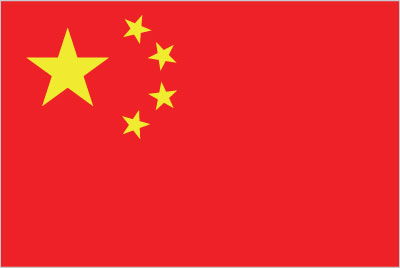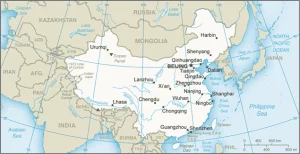Exporting to China


China Country Profile
Official Name (Local Language) The People’s Republic of China
Capital Beijing
Population 1,373,541,278
Currency Chinese Yuan Renminbi
GDP $10,730 billion
Languages Chinese (Mandarin)
Telephone Dial In 86
China Imports Profile
Imports ($m USD) 1,843,793
Number of Imports Products 4,433
Number of Imports Partners 215

China Economic Statistics
Government Website | https://english1.english.gov.cn/ |
| Sovereign Ratings | https://countryeconomy.com/ratings/china |
| Central Bank | People’s Bank of China |
| Currency USD Exchange Rate | 6.626 |
| Unemployment Rate | 4% |
| Population below poverty line | 3.3% |
| Inflation Rate | 2% |
| Prime Lending Rate | 2.25% |
| GDP | $10,730 billion |
| GDP Pro Capita (PPP) | $14,600 |
| Currency Name | Chinese Yuan Renminbi |
| Currency Code | CNY |
| World Bank Classification | Upper Middle Income |
| Competitive Industrial Performance | 28/138 |
| Corruption Perceptions Index | 77/180 |
| Ease of Doing Business | 46/190 |
| Enabling Trade Index | 46/190 |
Access trade, receivables and supply chain finance
We assist companies to access trade and receivables finance through our relationships with 270+ banks, funds and alternative finance houses.
Get StartedExporting to China
Generally acknowledged as the world’s most important emerging economy and already the largest commodity importer on the planet, China has taken up a strong role as a leader in world affairs. As the home of some of the world’s largest banks and other financial institutions it is already the world’s second largest economy.
Investor efforts to arbitrage a gap between offshore and onshore yuan rates has in part led to a capital flight in China, with the foreign exchange hoard having rapidly reduced by $500 billion to just over $3 trillion. There has however been diversification in trade as export shipments have been higher to Hong Kong, rising 8-11% year on year. The United States is a main partner for China and accounts for 3.4 trillion yuan in annual trade.
Exporting to China: What is trade finance?
Trade finance is a revolving facility which alternative lenders offer – it enables companies to buy inventory and can help reduce the pressure from cash flow issues.
Generally, a trade financier will fund most of the cost of the product, including charges (e.g. insurance costs).
Trade finance offers upsides over more traditional bank finance for example invoice finance or business loans. Trade finance provides up front funding without affecting existing bank relationships.
How does it work?
If you’re an SME importing or exporting inventory around the world, then a trade finance facility would help you to fund this through offering a letter of credit or some form of cash advance.
I’m looking to export to China, how can Trade Finance Global help, and how does it work?
If you’re looking to export stock to other countries, you may require export finance, which is an agreement between yourself (the exporter), and the foreign importer. A trade finance bank would advance you the cost of producing the stock supplies that you are exporting (as a debt product), either once you have sent the goods, or before you have manufactured them. Once your foreign importer has received the products and pays you for the import, you will repay the advance loan from the export bank over an agreed period of time.
Chart Showing GDP Growth Compared to rest of world
GDP Composition for China
Agriculture
8.6%
Rice, wheat, potatoes, corn, tobacco, peanuts, tea, apples, cotton, pork, mutton, eggs; fish, shrimp
Industry
39.8%
Mining and ore processing, iron, steel, aluminum, and other metals, coal; machine building; armaments; textiles and apparel; petroleum; cement; chemicals; fertilizers; consumer products (including footwear, toys, and electronics); food processing; transpo
Services
51.6%
Map
Top 5 Imports Partners
| Country | Trade | % Partner Share |
| Korea, Rep | 177,553 | 9.63 |
| Japan | 165,794 | 8.99 |
| Other Asia, nes | 155,961 | 8.46 |
| United States | 154,442 | 8.38 |
| China | 132,369 | 7.18 |
Top 5 Exports Products
| Export Product | Number |
| Monolithic integrated circuits, digital | 14.2% |
| Petroleum oils and oils obtained from bituminou | 8.9% |
| Non-agglomerated iron ores and concentrates | 4.1% |
| Gold in unwrought forms non-monetary | 2.8% |
| Parts of electrical apparatus for line telephon | 2.7% |
Local Partners
- All Topics
- Chinese Trade Resources
- Export Finance and ECA Topics
- Local Conferences



















